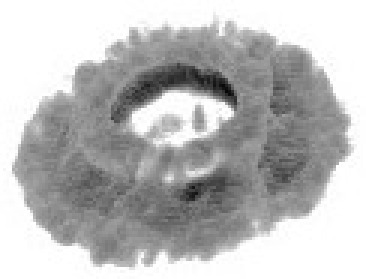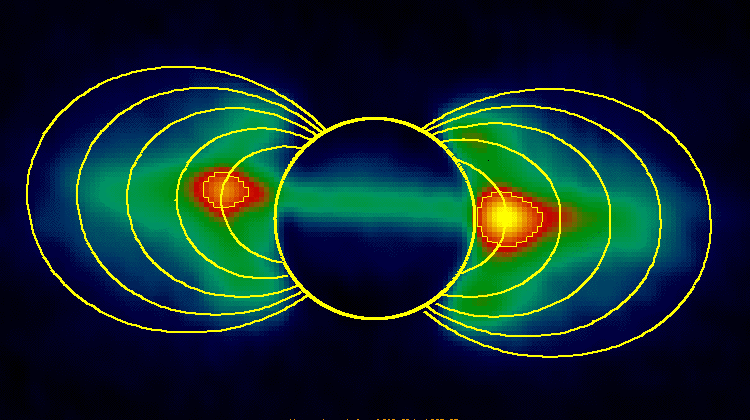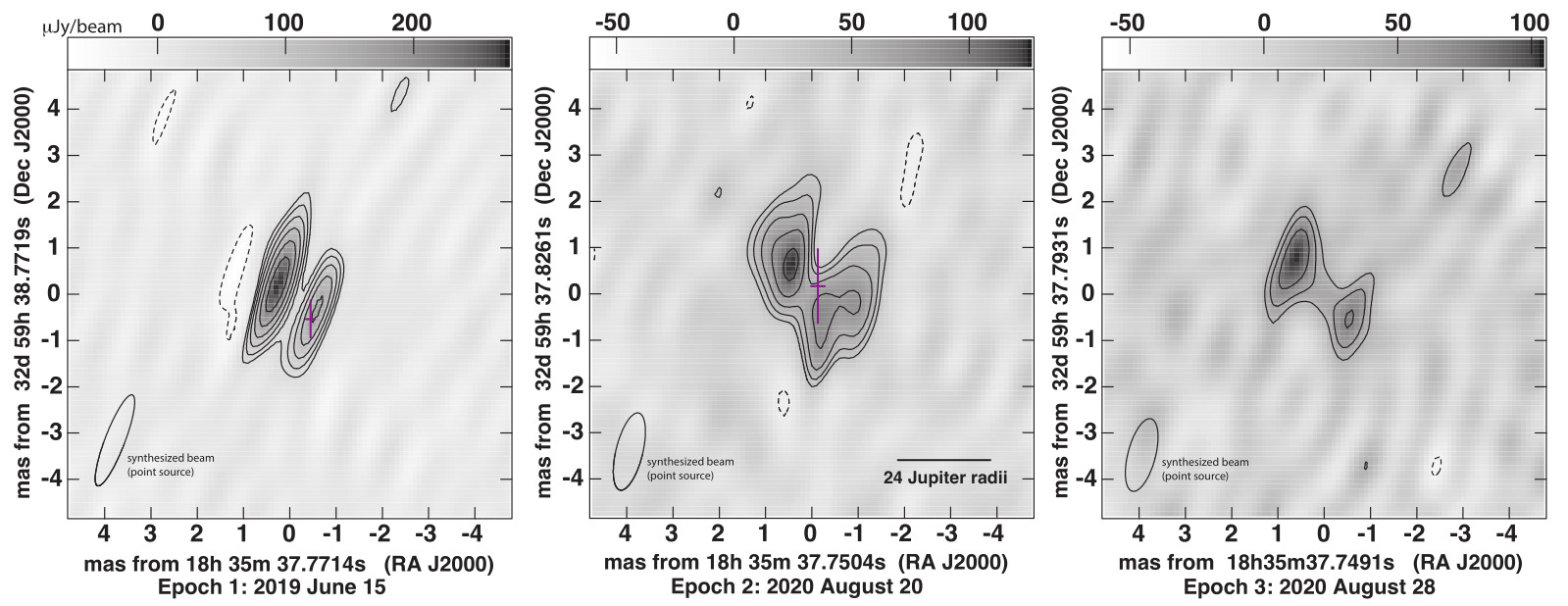Imaging an Extrasolar Radiation Belt
2024 February 15
Time for some actual astrophysics! I want to point people to a result from last year that I’m really excited about: Resolved imaging confirms a radiation belt around an ultracool dwarf, by Melodie Kao and colleagues (2023 Nature 617(7969) 272–275).
One way to think about being a scholar is to ask: what ideas am I fighting for or against? A field like astronomy is made up of thousands of interconnected ideas about the world. The finitude of human experience being what it is, you can only engage with a small number of them in any deep, significant sense. The ideas that you engage with deeply aren’t yours — they don’t belong to any of us — but they do become part of your academic identity.
As modern scholarship gets more and more specialized, the ideas that define our professional identities get narrower and narrower. Einstein was The Relativity Guy. Me, one of the ideas that I’ve tried to promote over the years is that we should think of magnetically active ultracool dwarfs as being scaled-up planets, magnetically speaking, rather than scaled-down stars. (Best citation for that: Williams 2018.) It’s not the flashiest idea out there, for sure. But I think it’s a good, solid one that deserves to be more widely appreciated.
An important line of evidence for this idea is that radio observations of ultracool dwarfs show a lot of features that can be fruitfully interpret as signatures of planetary radiation belts (aka Van Allen belts). These belts are associated with intense, bursty, highly polarized maser emission, which we definitely observe in the ultracool dwarfs, and also host a more quiescent population of energetic electrons forming what I like to call a “radio donut”. A super neat paper by Bob Sault et al. (1997 A&A 324 1190–1196) imaged Jupiter’s radio donut in 3D:

If you look at Jupiter using a radio telescope without Bob’s fancy techniques, you see a 2D projection of the donut. It varies periodically with the planet’s rotation, in a way that’s suprisingly strong due to synchrotron beaming effects:

I will assert without proof that there’s a ton of neat physics in these radiation belts, and as an astronomer it’s really cool to dig into this stuff and learn about all the fun things that planetary scientists have been doing in this field for decades. There’s also a promising opportunity the planetary scientists to profit from what we observe outside the solar system: Jupiter’s radiation belts are in many ways still quite mysterious, to the extent that there’s a NASA Heliophysics mission concept called COMPASS that envisions spending a billion-ish dollars to send a probe to understand them better. (I’m involved in its science definition team.)
Melodie is also an advocate for the idea that ultracool dwarfs have planet-like magnetospheres that should host radiation belts. If this idea’s actually correct, then around these objects you should have radio donuts resembling the Jovian one. I would argue that time-series data certainly support that conclusion, but can we actually make an image of one?
It turns out: yes!

Melodie and her colleagues observed one of the well-known radio-emitting ultracool dwarfs with the ultra-high-resolution Very Long Baseline Array in an inspired gambit to image any radiation belts that might be there. And it worked! The overall morphology is stable across three epochs of observations, suggesting a long-lived structure as one would hope to observe, and the physical characteristics that you can infer from the data (the separation of the two lobes, total luminosity, etc.) are all plausible.
(I should mention that just after Melodie et al.’s paper came out, Climent et al. published essentially the same result in Science (2023 Science 381(6662) 1120–1124; arXiv:2303.06453). Presumably there’s a bit of a story there, but I’m not familiar with it. I know Melodie and her coauthors, and have talked with her about this work, so that’s where I’m focusing.)
As the EHT folks can tell you, it can be a really big deal to be able to attach an image to an idea! My job responsibilities have kept me away from doing much in this field (or really, any kind of day-to-day astrophysical research) for a while, so it’s genuinely really cool to see other people pushing forward some of the ideas that I want to see succeed. The results of Kao et al. and Climent et al. are awesome steps forward, and hopefully harbingers of more great stuff to come!